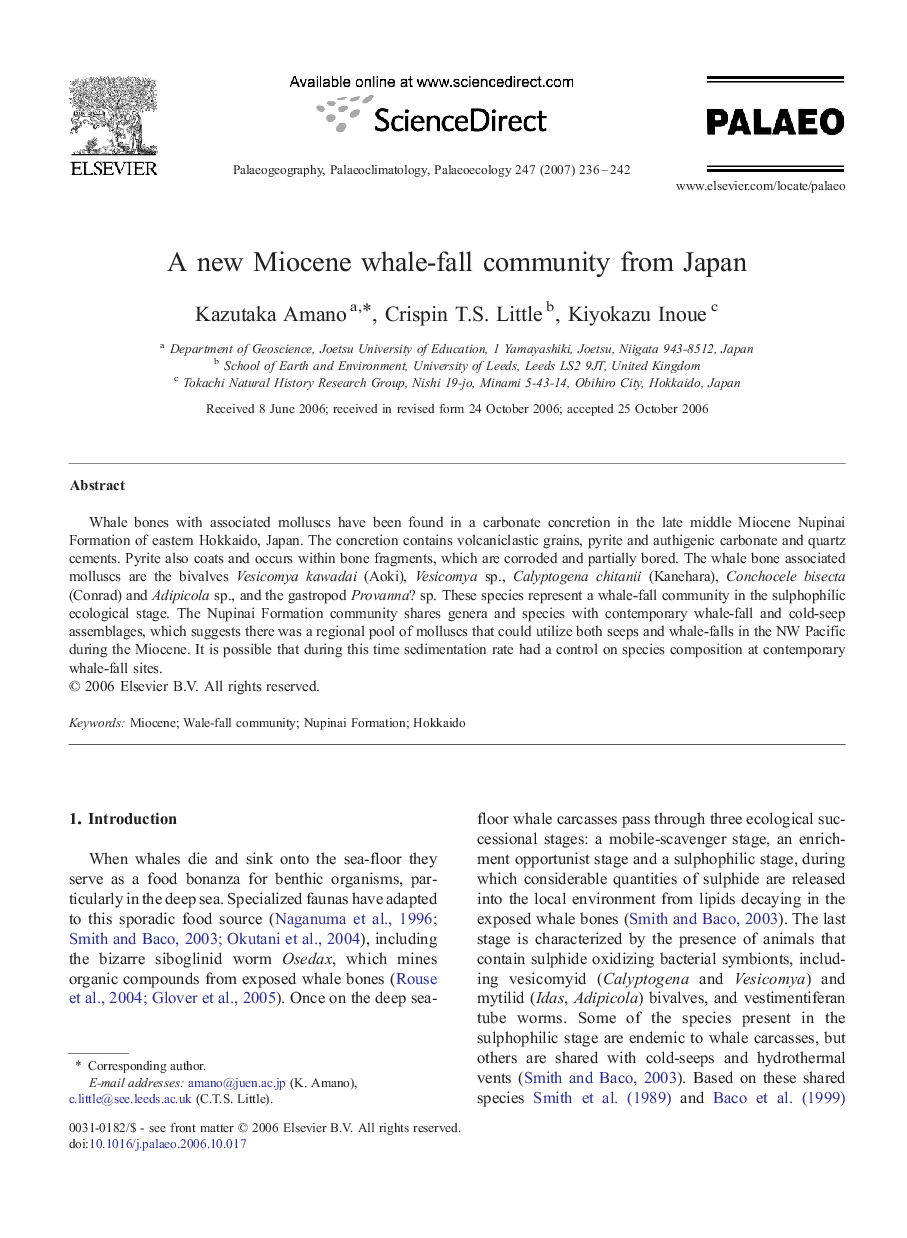| کد مقاله | کد نشریه | سال انتشار | مقاله انگلیسی | نسخه تمام متن |
|---|---|---|---|---|
| 4469108 | 1622354 | 2007 | 7 صفحه PDF | دانلود رایگان |

Whale bones with associated molluscs have been found in a carbonate concretion in the late middle Miocene Nupinai Formation of eastern Hokkaido, Japan. The concretion contains volcaniclastic grains, pyrite and authigenic carbonate and quartz cements. Pyrite also coats and occurs within bone fragments, which are corroded and partially bored. The whale bone associated molluscs are the bivalves Vesicomya kawadai (Aoki), Vesicomya sp., Calyptogena chitanii (Kanehara), Conchocele bisecta (Conrad) and Adipicola sp., and the gastropod Provanna? sp. These species represent a whale-fall community in the sulphophilic ecological stage. The Nupinai Formation community shares genera and species with contemporary whale-fall and cold-seep assemblages, which suggests there was a regional pool of molluscs that could utilize both seeps and whale-falls in the NW Pacific during the Miocene. It is possible that during this time sedimentation rate had a control on species composition at contemporary whale-fall sites.
Journal: Palaeogeography, Palaeoclimatology, Palaeoecology - Volume 247, Issues 3–4, 30 April 2007, Pages 236–242